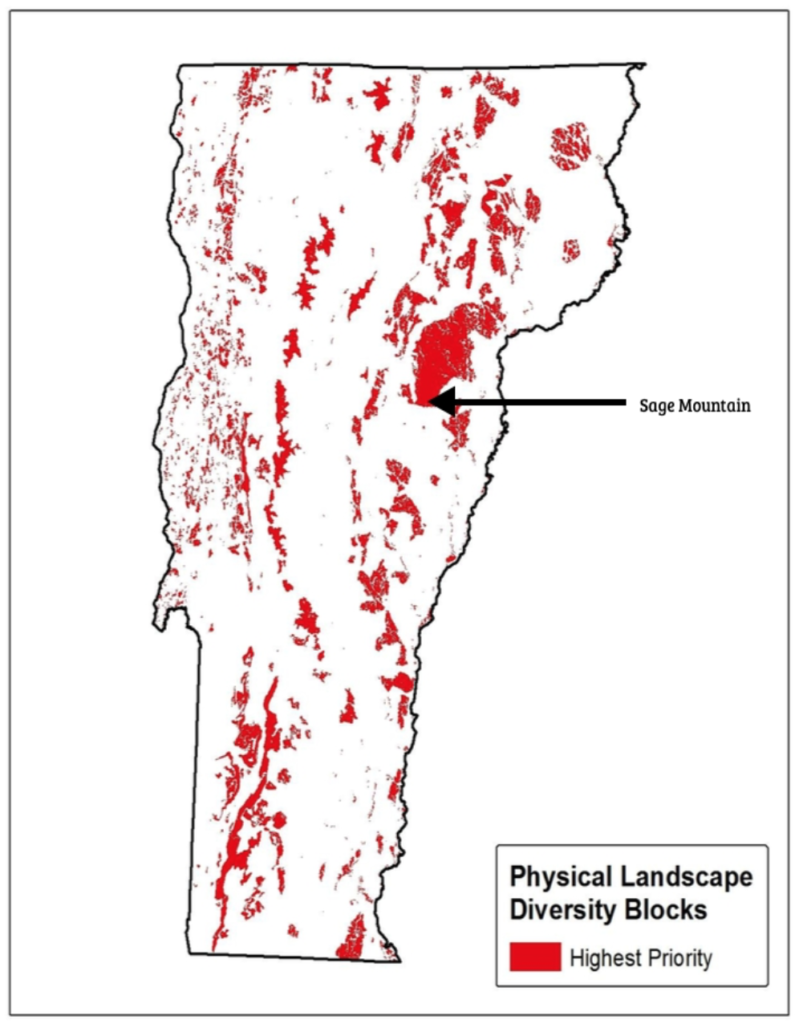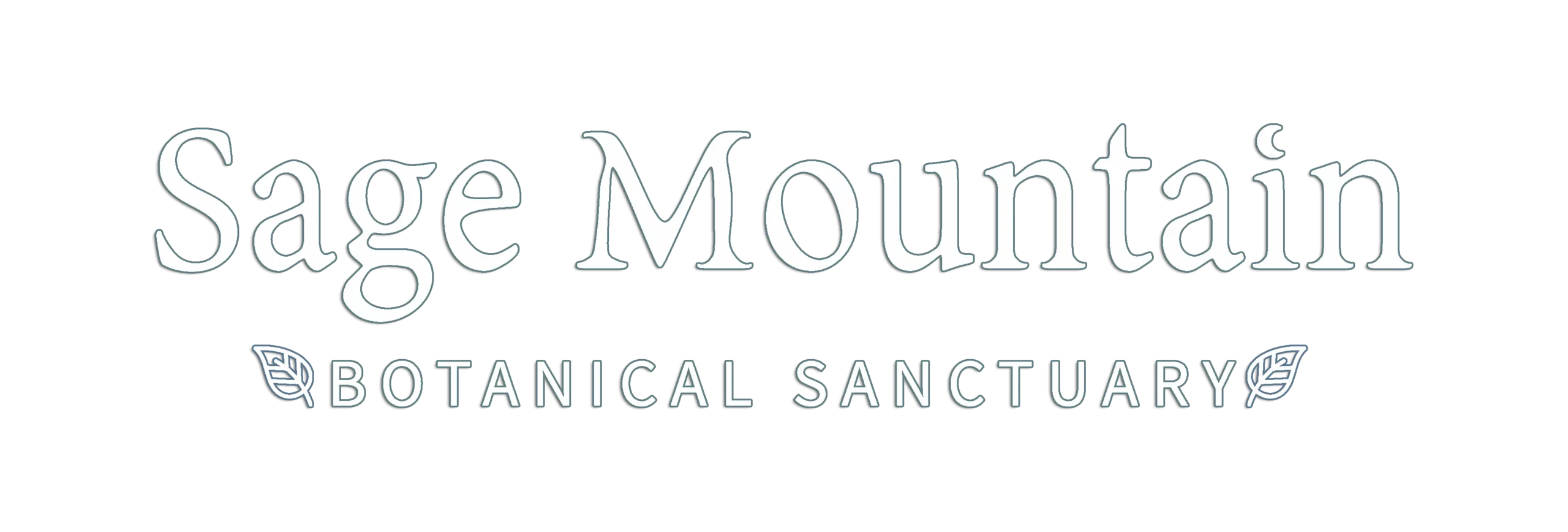Wildlife Corridor

Sage Mountain Botanical Sanctuary serves as a critical corridor for terrestrial and riparian wildlife, at the southern end of over 80,000 acres of contiguous forest including the 26,000 acre Groton State Forest.
The forest corridor at Sage Mountain is designated as a highest priority connectivity block within the state, serving the greatest importance for wildlife movement and genetic exchange. Land connectivity refers to the connection between blocks of suitable habitat, linking forests at a regional and local scale and providing an important – and widely disappearing – network for wildlife to roam. Wildlife corridors with contiguous, unfragmented core habitat can mitigate some of the adverse effects of habitat fragmentation on wildlife populations and biological diversity.
Specifically, climate change adaptation is enhanced if the long distance movements of plants and animals is supported within large, topographically diverse forest blocks. This connectivity supports wide-ranging wildlife’s ability to move across their range, allows wildlife to find suitable habitat for their daily and annual life needs, allows young animals to disperse, allows plant and animal species to colonize new and appropriate habitat as climate and land uses change, and contributes to ecological processes, especially genetic exchange between populations.
In addition, the road crossings adjacent to Sage Mountain, including the road to Sage itself, are buffered by large blocks of forest that is also noted by the state of Vermont as highest priority habitat for terrestrial and riparian wildlife. Our corridor connects our forests to other unfragmented habitat, with abundant occurrences of rare species and significant natural communities. This particular corridor is part of a large “linkage area” of the Northern Appalachian Mountain Range that connects the Green Mountains of Vermont with the White Mountains of New Hampshire. This linkage area connects entire populations of wildlife, allowing for genetic diversity and healthy populations across the region.
Contiguous blocks of forest habitat have decreased in size in the state of Vermont over the past few decades due to residential and industrial development, road construction, and land clearing for wind energy and timber. Contiguous blocks of forest habitat provide a significant contribution to the local community’s connection to natural heritage and landscape identity, and buffer species against the negative consequences of habitat fragmentation.
Forest corridors support viable populations of wide-ranging animals, including bobcat, American Marten, and black bear, that require large areas to survive by allowing access to important feeding habitat, the ability to move and find mates for reproduction, and as a result ensure genetic integrity of populations. They serve as habitat for source populations of dispersing animals for recolonization of nearby areas that may have lost their original populations of those species. Such habitat, together with other important habitats such as wetlands, supports natural ecological processes such as predator/prey interactions, hydrologic regimes and natural disturbance.
Conservation of biodiverse forests like those at Sage Mountain Botanical Sanctuary, is a critical component to address climate change and protect Vermont’s flora and fauna. As Moose, black, bear and other species are affected by the pressures of climate change and facing a need for adaptability and resilience, our diverse forest block and wildlife corridor will allow many species of animals and plants to disperse to suitable habitat without having to cross developed areas.
Contiguous blocks of forest habitat have decreased in size in the state of Vermont over the past few decades due to residential and industrial development, road construction, and land clearing for wind energy and timber. Contiguous blocks of forest habitat provide a significant contribution to the local community’s connection to natural heritage and landscape identity, and buffer species against the negative consequences of habitat fragmentation.
